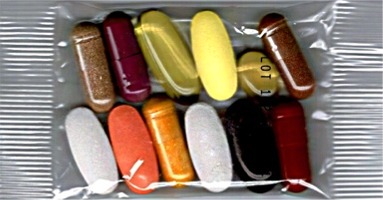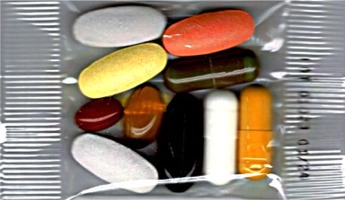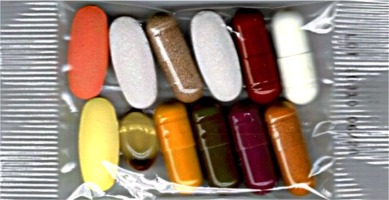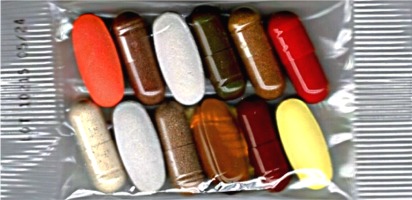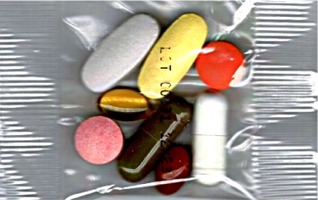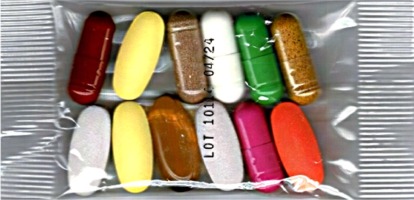In 1981 I wrote what I considered to be the latest concepts of
nutrition. Essentially all of the areas I cited now have become widely accepted.
I would like in this paper to reemphasize certain areas and add new suggestions
to the previous ones. One of the most glaring errors in health care in this
country and perhaps the world, is the lack of attention to the concept of
"prevention". It seems that part of human nature is to deny the
possibility of illness until it occurs. Once it occurs we will do and pay just
about anything to regain what we lost. If our families, schools and media would
focus on a few of these areas we would reduce pain and suffering and reduce
billions of dollars spent after the fact on health care.
First of all, we are a country of excess. The average American
is obese and under-exercised. We orient ourselves around the TV and with the
watching of the TV comes the eating. A recent article in Prevention magazine
noted that one easy way to reduce weight is to decrease television time to one
hour a day. The people of this country in general eat to the point of being
stuffed rather than content. We also eat our biggest meal at dinner when our
activity and caloric needs are the least. As mentioned in the last nutrition
paper, "Eat breakfast like a King, lunch like a Prince and dinner like a
Pauper." I would go further to say that one should never eat to the point
of being distended but rather to feeling no longer hungry. Think French when
eating. Savor your food and eat slowly. Learn to push away part of your meal and
be served smaller amounts. This will also help your pocketbook.
Secondly, change the quality of what you eat to a low, low fat
diet. Fat is likely the culprit with the epidemic proportions of breast, colon
and prostate cancer in this and other Western countries. The incidence of these
cancers and others is decreased in cultures eating a low fat, high fiber diet.
In Seventh day Adventists prescribing to a vegetarian type diet the incidence of
cancer in general is markedly decreased. Even in women already having a
diagnosis of breast cancer, obesity is an adverse prognostic factor, i.e. women
who are overweight do not respond as well as do women of normal weight. When you
are in the market read the labels regarding fat content. Strive for the lowest
fat diet you can reach. Animal meat consumption should be avoided as much as
possible. Fish, turkey and chicken should be your source of non-vegetable
protein. The majority of medical articles now suggest that we eat complex
carbohydrates- starches that require digestion to break them down to simpler
carbohydrates and eventually sugars. Simple sugars should be avoided. Their
consumption results in jumps in blood sugar with the body reacting with insulin
production and frequently hypoglycemia. Eating complex carbohydrates avoids
this. Coarse-grained breads, whole wheat and bran cereals, raw or lightly
steamed vegetables, fresh fruits are all in this class. Learn to use a Wok or
skillet and when using it try using Pam. It contains no fat.
ANR Formula One,
Two, Three, Four,
Five, Six, Seven
Heart, Alert, Maximus,
CATALOG
Increase the fiber in your diet as much as possible. When
doing so you speed the transit through the intestine and decrease the tendency
towards constipation. You also decrease your chances for getting colon cancer.
High fiber in your diet also lowers serum cholesterol. Fiber is filling and low
in calories. Patients with diabetes eating large amounts of fiber can lower or
eliminate their need for insulin. Fruits and vegetable and cereals are high in
fiber. Their are commercially available fiber bars as well as psyllium seed
products and bran wafers. I would suggest taking 6 to 10 grams of dietary fiber
in the form of bran wafers mixed with apple sauce. Drink plenty of water when on
a high fiber diet and supplement your diet with calcium, zinc and iron.
Substances called phytates in the fiber will bind with these elements and
possibly create a deficiency unless supplements are taken.
Salt should be minimized in your diet. Foods high in salt are
frequently high in nitrosamines which by themselves cause cancer. Salted, smoked
and pickled foods are not advised. Therefore avoid bacon and sausage and ham.
These are also high in fat. High salt intake in many individuals leads to water
retention and the need for diuretics ("water pills") and potassium
supplements. Salt is dangerous for people with hypertension. Instead of salt use
a salt substitute that is rich in potassium rather than in sodium. Cosalt, light
salt and other salt substitutes are available in your market. Their labels
should indicate their contents to be potassium chloride. Only patients with
kidney disease need to be concerned about potassium excess in their diets.
Potassium recently has been shown to have a blood pressure lowering effect. Low
potassium resulting from diuretics taken without supplementation results in
weakness and lethargy. In patients with heart disease, low potassium can cause
disturbances in heart rhythm.
Cigarettes should be totally avoided as should the inhalation
of passive smoke. These are cancer producing without question and one of the
major causes of illness and death in the world. Not only cancer but cardiac
disease and vascular disease all result from and are aggravated by cigarette
smoking. Lung cancer and bladder cancer are related closely to cigarette
smoking. If you want off cigarettes have your physician prescribe one of the
nicotine patch products to you.
Alcohol intake should be minimized to 1 or 2 ounces a day.
Alcohol will wash out many of the water soluble vitamins as well as increase the
consumption of Vitamin C, zinc, selenium, magnesium, calcium and potassium.
Alcohol in excess will increase fat deposits in the heart and decrease immune
function. Alcohol is a toxin to the bone marrow and can cause liver injury
leading to hepatitis and cirrhosis.
Please note that the recommendations made here are based on
medical reports and on personal observations. Many of these reports are viewed
with skepticism by members of the medical profession. If you review the
recommendations made in the 1981 handout you will note that at that time most of
the suggestions regarding dietary modifications and vitamins and trace elements
would be laughed at. Today, many if not all, of these suggestions are considered
good medicine.
- Stephen B. Strum M.D.
- September 1994
Also see:
Phytochemicals: Nutrients Of
The Future
Antioxidants: An Antidote to
Aging?
Better Eating for Better Aging
Nutrition Is Key To Successful
Aging: Kidd
Latest Concepts in Nutrition
Life Long Weight Management
for Health & Happiness
10 Tips to Healthy Eating
New Perspectives on Diet and
Cancer
Upbeat on Fiber for Longer
Life & Better Health
A Refresher On Water for Long
Life & Health
Reference Guide for Vitamins
Reference Guide for Minerals
Reference Guide for Herbs
Reference Guide for Amino
Acids
Reference Guide for Special
Nutrients
Reference Guide for
Anti-Oxidants
Reference Guide for Nutritional
Greens
Reference Guide for Digestive
Nutrients
Reference Guide for Dietary
Fibers
Suggested Readings and Guide
References
ANR Formula One,
Two, Three, Four,
Five, Six, Seven
Heart, Alert, Maximus,
CATALOG
|
